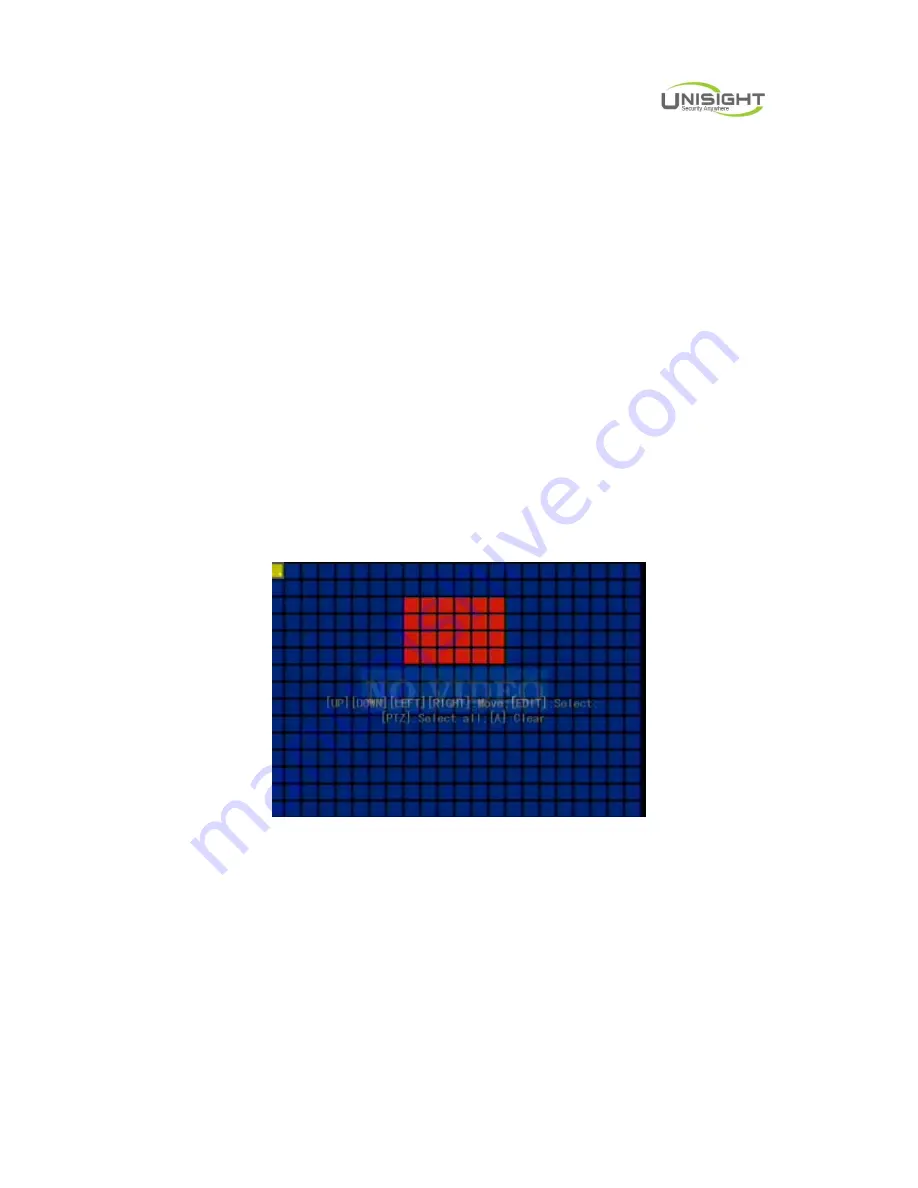
Digital Video Network Surveillance System
Unisight Digital Technologies, Inc
46
Step 1: Enter “Camera” menu:
Step 2: Select camera:
Use [
Ç
] [
È
] key to select one camera after pressing
[edit] key.
Step 3: Select motion detection sensitivity:
On the right side of “Motion Det.
Level” item, there is a list box. That is motion detection sensitivity. There are 7
options, from 0 (the lowest) to 5 (the highest) and “Off”. You can use [
↑
] [
↓
] keys to
select one. If you select “Off” option, DVR will not response even if there is motion
detection. If you select other options, it’ll active “Motion Area Setup” button and
“Policy Setup” button. If you select low sensitivity such as 0, DVR will response only
when there is great motion detected. On the other side, for high sensitivity such as 5,
DVR will response with small motion detection.
Step 4: Motion area setup:
You must define motion areas so that DVR will
response when there is motion in those areas. Move “Active Frame” to “Area” button
on the right side of sensitivity list box, press [ENTER] key, you can enter “Motion
Area Setup” interface. Show as Fig.5.18 below.
Fig. 5.18 Motion area setup
The whole screen is divided into 22*18 panes (NTSC: 22*15). There is one
yellow panel on the upper left side. The motion area setup steps are the same as that
of mask area setup (refer to chapter 5.7). The only differences are that you can use
[PTZ] key to set the whole screen as motion area, and multi motion areas can be
defined. Press [A] key to clear all motion areas.
Setup multi areas:
After you setup one motion area, press [EDIT] key, the
yellow pane will appear again, and then you can setup another motion area.
















































